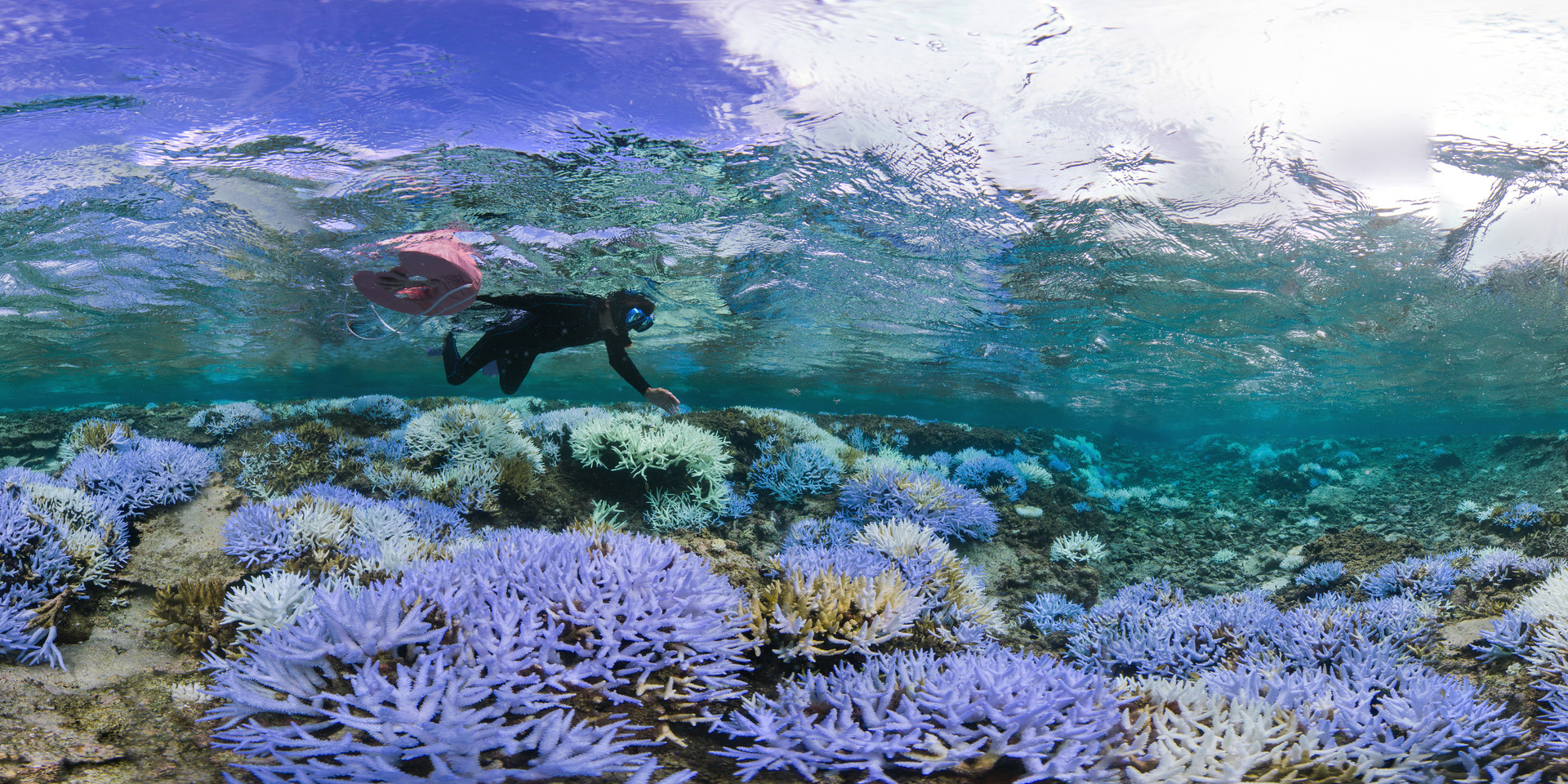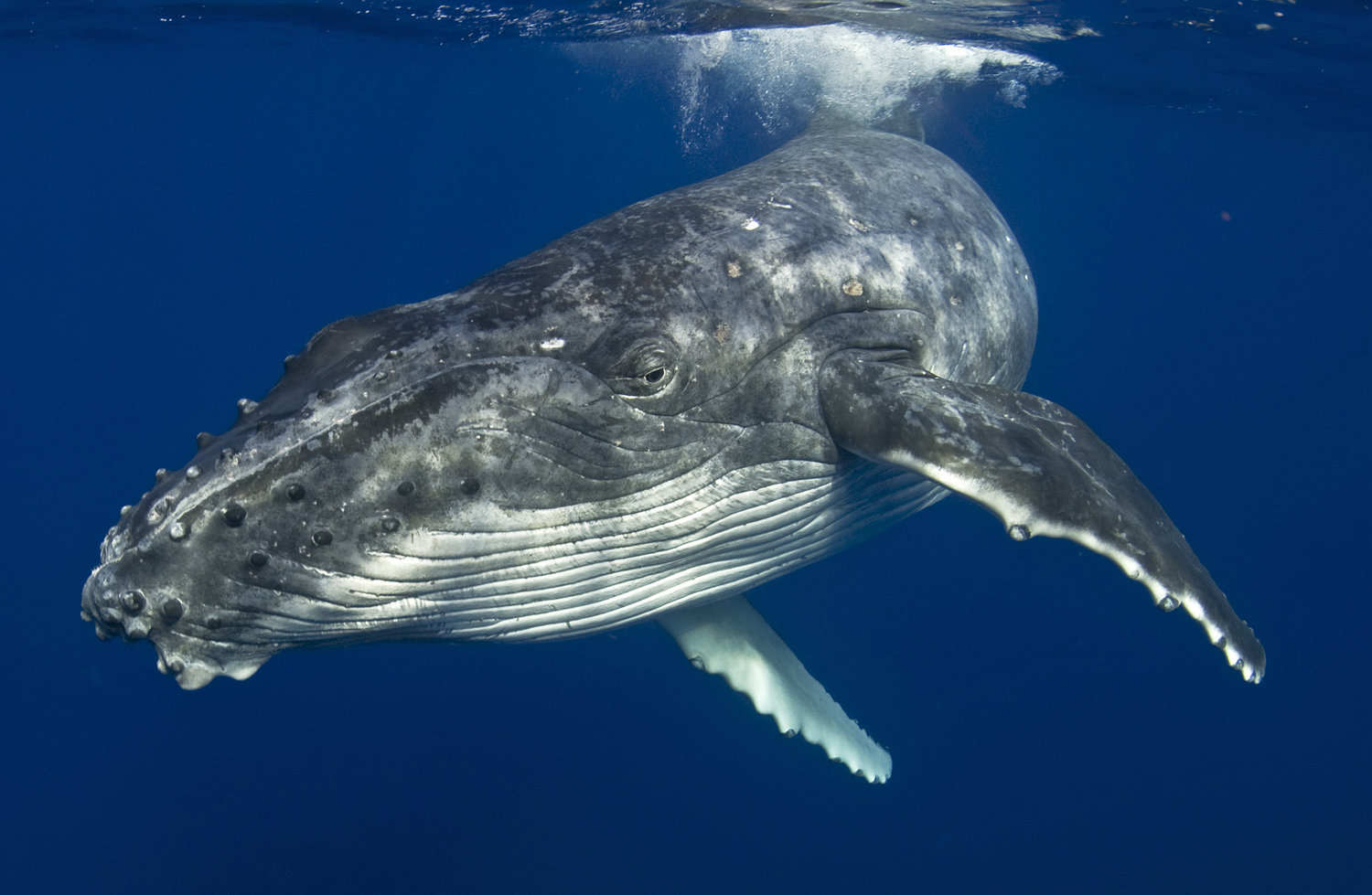A local spear fisherman dives next to Christophe Bailhache collecting 360-degree imagery of a coral reef in Palau. '©Underwater Earth'
Nimrod is a tough man with deeply tanned skin – the result of 40 years of fishing. He is one of the few remaining full-time fishermen in Palau, a beautiful, remote island in the Western Pacific Ocean. His job used to be easy. He could catch a full day’s haul without leaving sight of the jetty, but now it often takes him all day as he needs to take his boat further and further afield to find fish
The 50 Reefs team joined Nimrod for a day and saw for ourselves just how scarce the fish have become. It was an hour before we caught the first fish – one not even suitable to sell at the market. Despite the obvious frustration, Nimrod didn’t complain about the situation, as it has become the norm. However, his frustration and disappointment was plain to see as he talked about his community no longer being able to afford to eat fresh fish from their own island. With an ever-increasing number of tourists, the limited supply of fish is quickly snapped up by hotels at high market prices. Ironic, when you think the tourists, who expect to see these fish on the reef while diving and snorkeling for entertainment, also expect to be able to eat them for lunch and dinner each day.
Nimrod, a Palauan fisherman using a hand line to catch reef fish. (©Underwater Earth)
Our team was in Palau on a pilot expedition for our new 50 Reefs initiative. We photographed Palau’s reefs using our unique 360 camera system to reveal them as virtual dives for a global audience to explore in Google Underwater Street View. Although we’ve done expeditions like this in over 25 countries around the world, this expedition was different. We were there to tell deeper stories and wanted to show how these reefs are critical to the local community.
Half a billion people are like Nimrod – they rely on coral reefs for food and income. And half a billion people, like Nimrod, are in a perilous situation – relying on an ecosystem not just threatened by development, but now also from total collapse due to the global threat of climate change. This situation is the main reason why 50 Reefs launched earlier this year with the support of Bloomberg Philanthropies, The Tiffany & Co. Foundation, and The Paul G. Allen Family Foundation. The aim of the initiative is to address the rapid decline of coral reefs, by bolstering existing coral reef conservation efforts globally, by catalyzing new targeted action and investment.
The long wait for a fish to bite. (©Underwater Earth)
We have three specialist teams working together on the project: a science team (led by the University of Queensland) that will head up the process of identifying the reefs, which are not only the least vulnerable to climate change, but also have the greatest capacity to repopulate other reefs over time; a conservation team (led by the Wildlife Conservation Society) that will identify effective conservation strategies for these reefs sites; and a communication team (led by Underwater Earth). Our role is to raise awareness of the crisis facing coral reefs and to inspire support for the urgent action needed to protect them. We want to tell stories of people like Nimrod – to show the impact of the coral reef crisis on the people and communities that so often get ignored.
A local spear fisherman dives next to a diver collecting 360-degree imagery of a coral reef in Palau. (©Underwater Earth)
Palau was a pilot expedition, the maiden expedition of 50 Reefs. Although the science won’t tell us until October if Palau will make the list of 50 Reef sites, we knew Palau is a possible contender and we also knew it was sure to yield incredible images and insights.
We came away with thousands of images, as we always do on expeditions. But this time we also came away with rich stories and ideas for what can be done. Ideas from those that know the reef better than anyone – Nimrod and the fishermen like him. We were humbled and were enthused by the experience, and our time on Palau certainly gave new meaning to the 50 Reefs initiative in a way we never imagined.
50 Reefs is generously supported by Bloomberg Philanthropies, The Tiffany & Co. Foundation, and The Paul G. Allen Family Foundation.
Learn more at underwater.earth/50-reefs, or send us an email info@underwater.earth.





































